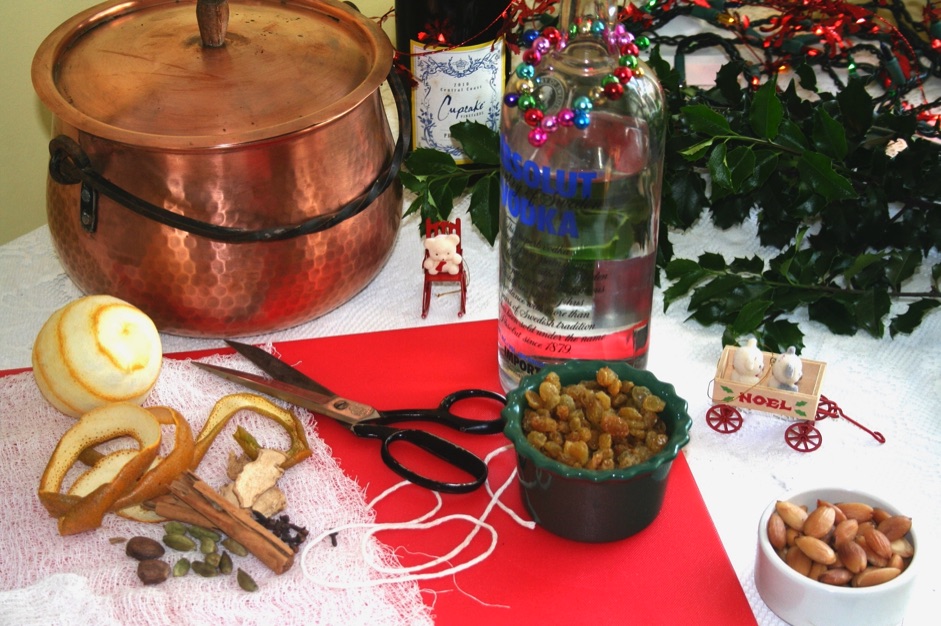Without glögg (pronounced “gluhg” by the Swedes, and “gloog” by the
Norwegians), the human population of northwestern Europe would have
abandoned its snowbound stugas ages ago to the wapiti and wolverine.
Compared to winter in Scandinavia, Minnesota is July in Delray Beach.
I was introduced to this remarkable hot, spiced wine concoction fifty-three
years ago at Upsala College. Since 1893, my alma mater, now sadly
defunct, had devoted herself to preparing Swedish-Lutheran ministers for
missionary positions all over the world.
Seventy-two years later, however, like every other institution of higher learning
in the ‘sixties, our respectable little campus had become transformed into a
virtual psychedelic-atessen.
Smugly chugging my first steaming mug, I said to myself “Whatever those
squareheads call this stuff, it can’t affect me.” Some mugs later, I was
singing a different tune – if memory serves, I opened with Dylan’s
“Mr. Tamborine Man,” then segued into a rousing cover of Sam the Sham and
the Pharaohs’ incomparable masterwork, “Wooly Bully."
As the warmth radiated through my dissolving body, unearthly shapes and
colors danced kaleidoscopically through my expanding mind. “With this
glögg stuff," I recall wondering, “who needs Sandoz Pharmaceuticals?”
So please, children, give glögg the respect it deserves. And when you take
your turn stirring the pot, keep in mind that the vapors evaporating from its
surface are highly combustible. So please – extinguish all smoking materials!
Glögg recipes vary, but are always built on a base of red wine. Though it
can’t be stated with certainty, it is reasonable to speculate that the Vikings
first became acquainted with red wine while terrorizing the coast of
southwestern France sometime between 780 and 800 A.D.
The Vikings became major players in the international spice trade as early
as the eighth century, and spices have been used with a free hand in the
Nordic countries for over a thousand years. Although the precise
complement of spices varies from household to household, several are
indispensable. Cardamom, a favorite in baked goods throughout
Scandinavia, is always among them.
Many recipes up the ante by invoking the spirits – usually aquavit, brandy,
rum, vodka, or 190-proof neutral grain spirits, such as Polish Spirytus,
or its identical American cousin, Everclear. Port, sherry, and other fortified
wines make frequent appearances. Glögg is almost always garnished with
raisins, and whole blanched almonds.
If you don’t have your own favorite glögg recipe, I have provided one
reconstructed from blessed, albeit blurry memory, from those Upsie dasies so
long ago. But by all means, feel free to experiment. We sure did! And just look
at us now! Skål!
INGREDIENTS
Red wine, 1.5 L, inexpensive but decent
Spirits, 750 ml, see above
Spices: 10 whole cloves; 2 cinnamon sticks; 10 whole cardamoms; 1
nutmeg, cracked in several pieces; a few slices of ginger, fresh or
candied; the peel of an orange, fresh or dried
Sugar, 1 cup (diabetics and others following a low-glycemic diet can
substitute 2/3 cup of blue agave syrup)
Raisins, black or gold, 1 cup
Almonds, whole blanched, 1 cup
METHOD
Place the spices and peel in a muslin bag, or wrap up in cheesecloth and
tie with string. Add the remaining ingredients, and stirring occasionally,
bring to a simmer. Cook for 1 hour. Do not allow the glögg to boil, ignite, or
explode. Discard the spices. Serve with a few raisins and almonds in each
cup.

